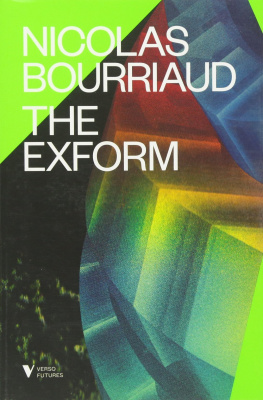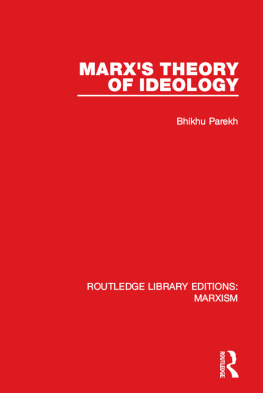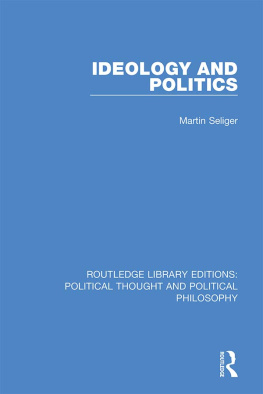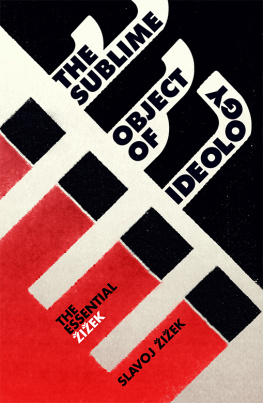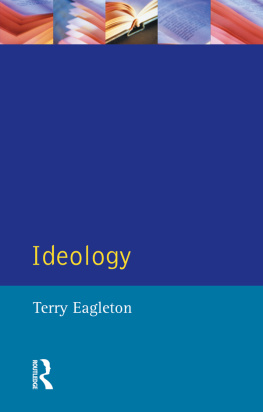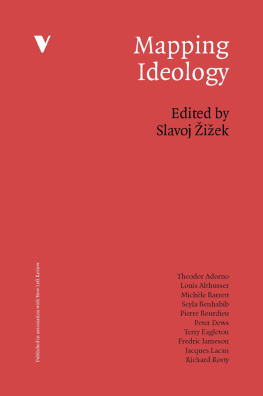Verso Futures is a series of essay-length philosophical and political interventions by both emerging and established writers and thinkers from around the world. Each title in the series addresses the outer limits of political and social possibility.
The Exform
Nicolas Bourriaud
Translated by Erik Butler

First published in the English language by Verso 2016
Translation Erik Butler 2016
Originally published as La Exforma Adriana Hidalgo Editora,
Buenos Aires, 2015
All rights reserved
The moral rights of the author have been asserted
1 3 5 7 9 10 8 6 4 2
Verso
UK: 6 Meard Street, London W1F 0EG
US: 20 Jay Street, Suite 1010, Brooklyn, NY 11201
versobooks.com
Verso is the imprint of New Left Books
ISBN-13: 978-1-78478-380-8 (PB)
ISBN-13: 978-1-78478-379-2 (HB)
ISBN-13: 978-1-78478-381-5 (UK EBK)
ISBN-13: 978-1-78478-382-2 (US EBK)
Names: Bourriaud, Nicolas, author.
Title: The exform / Nicolas Bourriaud ; Translated by Erik Butler.
Description: Brooklyn, NY : Verso, 2016.
Identifiers: LCCN 2016002300 (print) | LCCN 2016008503 (ebook) | ISBN 9781784783808 (paperback) | ISBN 9781784783792 (hardback) | ISBN 9781784783822 (Ebook)
Subjects: LCSH: Art Philosophy. | Ideology. |
BISAC: PHILOSOPHY / Political.
Classification: LCC N66 .B68 2016 (print) | LCC
N66 (ebook) | DDC 700.1 dc23
LC record available at http://lccn.loc.gov/2016002300
Typeset in Sabon by Hewer Text UK Ltd, Edinburgh, Scotland
Printed in the US by Maple Press
Contents
Things and phenomena used to surround us. Today it seems they threaten us in ghostly form, as unruly scraps that refuse to go away or persist even after vanishing into the air. Some maintain that the solution would be to forge a new contract with the planet, inaugurating an era in which things, animals and human beings stand on an equal footing. Until then, we inhabit an overfull world, living in archives ready to burst, among more and more perishable products, junk food and bottlenecks. All the while, capitalism boldly dreams its dream of frictionless exchange: a universe where commodities beings and objects alike circulate without encountering the slightest obstacle. Yet ours is also an epoch of squandered energy: nuclear waste that wont go away, hulking stockpiles of unused goods, and domino effects triggered by industrial emissions polluting the atmosphere and oceans.
The most striking image of refuse and discharge occurs in the economic sphere: junk bonds with toxic assets; its as if dangerous materials buried away in the balance sheets of obscure subsidiaries and mutualized portfolios had invaded the financial universe. The matter plainly reveals the real of globalism: a world haunted by the spectre of what is unproductive or unprofitable, waging war against all that is not already at work or in the process of becoming so. We have witnessed the realm of waste assume vast dimensions. Now it encompasses whatever resists assimilation the banished, the unusable and the useless Waste, according to the dictionary, refers to what is cast off when something is made. The proletariat the social class that capital has at its full disposal is no longer found only in factories. It runs through the whole of the social body and comprises a people of the abandoned; its emblematic figures are the immigrant, the illegal and the homeless. Once upon a time, proletarian referred to a worker who had been dispossessed of his labour. Our age has expanded the definition; it now includes all who have been stripped of experience (whatever it might be) and forced to replace being with having in their everyday lives. The delocalization of industrial production, massive downsizing, mounting political disregard for social welfare, as well as increasingly harsh immigration laws, have led to the emergence of grey zones where surplus human beings vegetate whether as undocumented workers or as the chronically unemployed. At the same time, an economy of impurity exists in plain view: people who process fish, clean buildings, move houses, and dispose of diseased livestock social categories covered by the caste of untouchables in India.
It would appear that the spectral dance Marx describes in Capital has assumed a new form today. This book proposes to analyze, by way of the optical machinery afforded by contemporary art, the effects of this mutation on our modes of thinking and feeling.
One catches sight of the characteristic dance of a given epoch through relations between art and politics. Since the beginning of the nineteenth century, both spheres have been fashioned by the centrifugal force created by the Industrial Revolution: on one hand, a movement of social exclusion; on the other, the categorical rejection of certain signs, objects and images. Here, the model of thermodynamics holds. Social energy produces waste; it generates zones of exclusion where the proletariat, popular culture, the squalid and the immoral pile up in a jumble the devalued ensemble of what one cannot bear to see. The spectral dance, in other words, is the phantasmagoria specific to an epoch. It follows from the orchestration of regulated exchanges between centre and periphery the organization governing what is official and what is rejected, what is dominant and what is dominated which make the borders between realms into the dynamic site fuelling History. From the nineteenth century on, the political and artistic avant-gardes have made it their task to help the excluded accede to power, whether by stealth or in plain view that is, to reverse the thermodynamic machine, to capitalize on what capital has repressed, to recycle putative waste and make it a source of energy. In the process, centrifugal movement is supposed to change course, bring the proletariat back to the centre, restore the dropout to culture, and introduce what has been demeaned into works of art. But now, two centuries later, does this dynamic still produce any energy?
Ideology, psychoanalysis and art represent the principal fields of battle for realist thinking; in their respective domains, Marx, Freud and Courbet laid the foundations. All three refuted the hierarchies their society advanced in the name of its Ideal, questioned the presuppositions underlying its mechanisms of exclusion, and sought procedures for unveiling them. Today, this realist strategy seems best suited for founding a political theory of art capable of moving beyond what is merely politically correct and simple denunciations of mechanisms of authority or repression. Accordingly, what is qualified as realist in the following is art that resists this operation of triage; likewise, realist describes works that lift the ideological veils which apparatuses of power drape over the mechanism of expulsion and its refuse, whether material or not.
This is the realm the exformal: the site where border negotiations unfold between what is rejected and what is admitted, products and waste.

